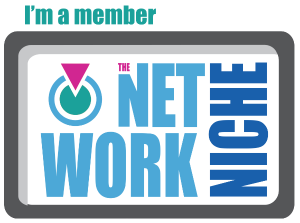
by Solange Lopes | Mar 9, 2018 | Make More Money
 If you’ve ever considered paying off your debt, you may have balked at the thought of depriving yourself and living like a hermit for the rest of your life. Little luxuries like your Starbucks latte or your not-so-small shoe habit may seem like they would become distant memories on the horizon.
If you’ve ever considered paying off your debt, you may have balked at the thought of depriving yourself and living like a hermit for the rest of your life. Little luxuries like your Starbucks latte or your not-so-small shoe habit may seem like they would become distant memories on the horizon.
Yes, we could certainly start the business, pay the mortgage off, squash that credit card debt with a few financial sacrifices. Yet, for many, if not most of us, making a harsh and not necessarily realistic plan for our finances ends up having us hating life and splurging on the most expensive pair of Louboutins you can slide your feet in.

This is why it’s so important to tackle paying off debt in a realistic and sustainable way.
Here are 7 ways to get you on the path of debt repayment, minus the intense stress and social isolation:
-
Start with a reality check
Ok, let’s begin at the beginning. It all starts with understanding and realizing where you stand financially. This means looking at your credit and debt history straight in the eye. While it can be easy to turn a blind eye to your debt situation, getting a reality check will get you started well on your debt repayment process.
Credit Karma provides you with a free credit report, in addition to detailing your credit history. It allows you to see your debt amount, as well as any debts in collection, and even your monthly payments and interest rates.
-
Earn extra income
Here’s the thing: when you already are in debt and still have to pay for your normal expenses, saving money to pay off your debt can be challenging. This is where making extra income comes into play.
For many, if not most of us, one of the best ways to pay off debt is to have a profitable side hustle. Whether it’s selling Avon products, have a side blog, or being in network marketing, finding ways to create additional income can go a long way towards squashing your debt.
-
Start with the highest interest rates
Once you have money available to pay off your debt, start looking at the interest rates on your credit cards and other debt instruments. You will notice that some of them have much higher interest rates than other, at times up in the 20% range. The cards or debt instruments with the highest interest rates will cost you more in the long run, as you will be stuck paying insane amounts of interest rather than directly paying off the principal or main balance you owe. This is also how credit card companies are making money, by having us pay loads of interest, which is basically free money for them.
My preferred approach is to tackle the cards or debt instruments with the highest interest rates first. For these cards, I plan to increase my monthly payments, and when I can, even double or triple them to pay them off faster. This allows me to limit how much interest I have to pay in the long run, and reduce my debt bill overall. The trick is to pay these off, and once you’re done, go on to the next credit card with the highest interest rate. And so on and so forth…
-
Or pick the lowest debt amount
Another approach is to tackle the cards or debt instruments with the lowest amount to repay. This can be a gratifying process as it allows to eliminate small debt amounts first and faster. Many people are encouraged by this system, as it lets them see the result of their efforts earlier on.
Here too, the point is to reimburse your lowest debt amounts first, and move on to the next lowest amount.
-
Put your savings on auto-pilot
Apart from earning extra income and choosing an approach for debt repayment, saving money also plays a role. However, when it comes to saving, automating the process can be more effective.
The Digit app monitors your spending habits, and easily withdraws money from your checking account into a rainy day savings account. The amount saved varies from person to person. The app takes into account your unique financial situation through your spending habits to do this. Another alternative is Stash.
Another tool that helps you save money is the Trim bot. It’s basically like a financial assistant in your phone. From canceling subscriptions you’re not using, to helping you negotiate your bills down, it just assists you in making better financial decisions and saving.
Another way to trick yourself to save on your credit card purchases is to use the Debitize app. Basically, you make purchases on your credit card, and the purchase amount is automatically deducted from your checking account in order to pay your credit card bill at the end of the month. This way, you reap the credit card rewards without the associated headaches.
Last but not least, earning cash back on your purchases and expenses is another way to save. Apps like RetailMeNot, Groupon, and Living Social, for instance, can help you score deals and save.
-
Sell your extra stuff
Most of us have more stuff that we could possibly use. Sometimes, it takes a bit of humility and a lot of financial sense to use that extra stuff for the purpose of debt repayment. For bookworms like myself, Bookscouter lets you sell your old books.
Letgo is a great app to help you sell second-hand stuff on the go.
-
Get it for free
Having fun while you’re trying to pay off your debt can be quite the challenge. For many of us, having fun is directly linked to spending money. Whether it’s a $5 latte or a $100+ night out with the girls, entertainment often comes with a bill.
However, there are many ways to enjoy life without getting off track when it comes to paying off your debt. You can enjoy public parks, public and free attractions at no cost. Instead of dropping your coins on books, how about going to your local library? Even better, you can become a mystery shopper and get paid to enjoy things you would normally have to pay for.
How do you manage to pay off your debt quickly and realistically?
To Your Success,
The Corporate Sister.

by Solange Lopes | Mar 8, 2018 | Make More Money
 Many of us wonder how we can make more money without having to switch jobs, have a gazillion gigs, or sell our souls for that matter. Especially as working women, facing the glass ceiling is daunting enough without having to think about increasing our financial status right at our workplace. Yet, without the prospect of bettering our financial lives, our career, business and even lifestyle choices end up being very limited.
Many of us wonder how we can make more money without having to switch jobs, have a gazillion gigs, or sell our souls for that matter. Especially as working women, facing the glass ceiling is daunting enough without having to think about increasing our financial status right at our workplace. Yet, without the prospect of bettering our financial lives, our career, business and even lifestyle choices end up being very limited.
How many of us have thought about investing in a new business, buying a home, or putting our kids in private schools or extra-curricular activities, and have been limited by our bank balances? How many of us feel that we cannot pursue our passions, or take proper care of ourselves, because of money constraints?

While we may think that our financial status is limited to our job earnings, there actually are ways to make more money while at your job. It’s also important to keep in mind that increasing your financial worth at work doesn’t just have to be linked to your salary or pay. Basically, anything that can put money back in your pocket in the context of your work, whether it’s more vacation time, more flexibility, or even better health and work-life integration, counts. However, it takes more of a conscious effort to start thinking about and planning these in order to take advantage of these opportunities.
Here are 7 ways we can all make more money without leaving your job:
-
Create more value in your work
Instead of feeling stuck at your current job, you have a choice. You can add more value to your work that makes you more marketable and increases your professional and business value. Don’t get caught into the vicious cycle of thinking that your current job determines your financial worth! The point here is to provide more than what is expected of you at your current level. If you’re not sure how you can do this, you may ask your manager and higher-ups. A good way to gauge how you can go above and beyond is to consider what is required of your next professional position or level, and start performing accordingly.
Take extra assignments, develop yourself, take classes, network more, learn an extra language, get a certification! These are only a few of the ways you can boost your professional value, and be in a position to ask for more, whether it’s money, time, or perks! As long as your presence at your job creates more value for your company, your financial worth is bound to go up!
-
Score those promotions and raises
In line with creating more value, you can also increase your financial worth at work by scoring promotions and raises you rightfully deserve. It starts with performing at a higher level than expected. However, you must also be willing to ask for what you deserve.
As working women, we’re often afraid to negotiate for the salaries we deserve, or even the appropriate compensation package for us. With the advent of the new law that bars employers from asking about salaries in some states, it is easier for women to negotiate higher salaries with less pressure.
-
Don’t be afraid to start that side hustle
Got an idea, a passion or hobby that you could turn into a side hustle? Why not start it? Many successful and very profitable businesses were started this way. It could be as easy as starting a blog you could monetize, or teaching classes at your local gym.
You can even use your current credentials to do business on the side, as long as it doesn’t infringe on your current job. Make sure to check in your company’s policies and procedures first. As a CPA, I started helping people with taxes and accounting matters, for instance.
This is a great way to make more money, without the pressure of having to find another job or taking a significant financial risk.
-
Pay off that debt
Paying off your debt is one of the most powerful ways to increase your financial worth. Without even realizing it, you may be flushing your entire financial capital into simply paying interest. Not only are you putting extra money back into credit card companies’ pockets, but you are also not reducing whatever amount you owe.
By committing to, and working on, paying off your debt, you’re actually keeping more of your money. This in turn increases your financial balance. Additionally, you’re improving your credit score, which in turn gives you access to better credit deals on essentials such as mortgages, car payments, etc. All of this without leaving your cubicle or office…
-
Save, save, save!
Repeat after me: “It’s not about how much money I make, it’s about how much money I keep!” Saving money is a surefire way of making more of it, without having to wave good-bye to your current occupation. Your job may actually be allowing you to save more, through its 401k programs, its health benefits and incentives, or other savings programs it may offer.
Saving on costs associated with your job, such as commuting expenses (why not carpool?), food expenses (bring your own lunch), or clothing costs (become a savvier shopper), can also help. At the end of the day, the less you have coming out of your take-home pay, the more money you’re actually making!
-
Give more!
This may sound counter-intuitive, but giving money can help you make more money. Not only are you able to deduct any donations to qualifying charities, but you can also use what I like to call the “spiritual karma” of giving. Some of the wealthiest men and women in the world practice giving, whether through tithing, charity donations, or other forms of financial support.
Consider dedicating a portion of your earnings to causes, businesses or people you believe in. It goes a long way towards multiplying what you already have.
-
Ask for more flexibility
As working women, flexibility is key to achieve our goals and dreams. As such, it is putting money back in our pockets in some way. Having the flexibility to work from home, for instance, allows us to save money on childcare.
Consider asking for more flexibility as a way to increase your financial worth at work. You will soon realize how much money it can help you save in the long run.
In what other ways do you save money without leaving your job?
To Your Success,
The Corporate Sister.

by Solange Lopes | Mar 6, 2018 | Make More Money
 Having a solid and reliable budget is considered to be a financial must-have. However, it also requires to have a certain level of discipline, as well as time to keep track of several expense streams. When you’re a busy working woman looking for extra hours in the day, managing a budget may not exactly rank high on your list of favorite things to do.
Having a solid and reliable budget is considered to be a financial must-have. However, it also requires to have a certain level of discipline, as well as time to keep track of several expense streams. When you’re a busy working woman looking for extra hours in the day, managing a budget may not exactly rank high on your list of favorite things to do.
Don’t get me wrong, budgeting works extremely well for many people. However, for others, it may feel like getting ready for a root canal. When you work hard for pretty much everything in your life, sometimes the last thing you want to do is work harder at your budget.
Even as an accountant by trade, I never particularly enjoyed rigid and conventional budgets. I resented having to check my budget often and monitoring my expenses closely. Doing it for work was enough. I had no desire to do it for myself. Instead, I thought managing the money I worked hard for should be more enjoyable.

If you happen to be an extremely busy working woman who resents rigid budgets yet still want to keep on top of your finances, here are some realistic, and even fun, tips:
-
Start with your non-negotiables
Whatever you do, begin your budgeting process with your non-negotiables. These include your rent or mortgage, basic living expenses, utilities, emergency savings, debt payment, and retirement. While many may not consider emergency savings and retirement as non-negotiables, they actually are and should be accounted for in priority. These can be paid right at the beginning of the month or automated for ease of processing.
Starting with these essential expenses allows to get critical expenses out of the way. This takes a massive weight out of the process, freeing up time and resources to focus on other pursuits. Whatever money you have left over can be used more flexibly.
-
Think about what will help you accomplish your goals
Once your non-negotiables are taken care of, focusing on your future goals should be the next step. It’s also more fun to think about what you want to achieve with your money. Make a list of your financial goals, according to what’s important to YOU.
Some of your financial goals may include setting aside some money to travel or bolstering your emergency savings. You may also be considering investing as a way to generate extra income in the long-term and build wealth.
This will require you to delay gratification and instead focus on how long it will take to reach your goals. Based on this, you can make a commitment to devoting your funds to these.
-
Distinguish between your wants and needs
You may not have the time, or even the desire to spend more time than necessary on your budget. However, even for a realistic and flexible budget, it’s important to make the difference between what you want and need.
This distinction will help you save time in making financial decisions, and reduce the need for adjusting or constantly checking on your budget.
-
Make a list of what you enjoy spending money on
Last but not least, make a list of what you enjoy spending money on. This is the last part of building a flexible and fun budget. It’s also a motivating factor when budgeting your money. However, this doesn’t mean you should be wasting money. The point of it is to spend money on things and experiences that truly bring you joy.
You will also feel more comfortable doing this as you would have already taken care of your essential expenses, addressed your financial goals and distinguishing between your needs and wants.
In Conclusion
Yes, you need a budget to manage your finances efficiently and productively. However, you don’t have to abide by a complicated budgeting model that takes all the fun out of earning (and spending) money.
Instead, you can still take care of your essential expenses. You can also satisfy your goals and be more intentional as to your wants and needs, while still being able to use your money for your enjoyment.
Do you have a hard time sticking to your budget? How can you make your budget more realistic?
To Your Success,
The Corporate Sister.

by Solange Lopes | Jan 9, 2018 | Make More Money
 Unless you’re doing your taxes on your own, choosing the right tax preparer is key. There are many benefits to hiring a tax preparer and outsourcing your taxes. However, choosing someone who has the right credentials, expertise and understanding of your particular situation requires certain specific steps.
Unless you’re doing your taxes on your own, choosing the right tax preparer is key. There are many benefits to hiring a tax preparer and outsourcing your taxes. However, choosing someone who has the right credentials, expertise and understanding of your particular situation requires certain specific steps.
Not only will the right tax preparer help you file an accurate tax return, but he/she will also help you maximize your deductions and reduce your tax liability.

Here are 10 tips to remember if and when you are ready to pick a tax preparer:
-
Check your tax preparer’s qualifications and history
It’s important to verify that your tax preparer has the adequate qualifications. You can consult the IRS Directory of Federal Tax Return Preparers as a reference. In addition, you may also inquire about the tax return preparer’s history with the Better Business Bureau, the appropriate State Boards of Accountancy (if you’re dealing with a CPA), or the State Bar Association (if you’re dealing with a tax attorney).
-
Ensure they have a PTIN number
Note that all paid tax preparers are required to have a Preparer Tax Identification Number (PTIN), which you can request. Additionally, you may inquire if they also attend continuing classes or belong to a professional organization.
It’s wise to inquire about a tax preparer’s fees even before submitting any documentation. Avoid any tax preparer who bases their fees on a refund amount or percentage. You may also want to confirm these fees in writing with your chosen tax preparer.
-
Check on e-filing services
Inquire of any tax preparer you may be considering if they offer e-filing services. If so, make sure to ask them about the e-filing process, deadlines and other requirements, as well as the best filing options.
-
Confirm their availability
You may also want to ensure that your tax preparer will be available for your needs, even after your file your tax return. Confirm the due dates and deadlines of your tax return preparation service.
-
Ask if they provide support in case of audits
IRS tax audits are scary, but they are a possibility. Ask your potential preparer if they will/can support you in case of a tax audit. You may also want to obtain information about any additional fees in this instance.
There are some common red flags you should be aware of as you pick the right tax preparer for you. Avoid any tax preparer that tells you you should sign a blank tax return. Similarly, do not engage with a tax preparer who won’t sign your tax return or will not include their Preparer Tax Identification Number (PTIN). Last but not least, any sign of an abusive tax preparer should have you running in the opposite direction.
-
Provide records and receipts
Any good tax preparer should ask you for records and receipts, and ask you pertinent questions about your income, expenses, deductions, and other items. Watch out for any preparer who only asks you for your last pay stub instead of your W-2 in order to e-file your return, as it is against IRS rules.
-
Be aware of your complaint options
Know that you are able and encouraged to report any abusive or incompetent tax preparers. You may use Form 14157, Complaint: Tax Return Preparer. In case said tax preparer filed or modified your return without your consent, you may also file Form 14157-A, Return Preparer Fraud or Misconduct Affidavit. You can get these forms at IRS.gov or by calling 800-TAX-FORM (800-829-3676).
Last but not least, listen to your gut. While you may not necessarily be familiar with tax matters, trust your instinct when it comes to working with certain individuals. Do your due diligence and ask as many questions as you need to feel more comfortable.
Got any tax-related questions? Click HERE to contact our sister consulting website SW Consulting.
To Your Success,
The Corporate Sister.

by Solange Lopes | Jan 4, 2018 | Make More Money
 The start of the New Year is always a great time to plan your finances. Making a solid financial plan should be at the top of your to-do list, as it can significantly impact your financial future as well as that of your children.
The start of the New Year is always a great time to plan your finances. Making a solid financial plan should be at the top of your to-do list, as it can significantly impact your financial future as well as that of your children.
While financial planning is important for everyone, women tend to face unique economic and lifestyle challenges that require special attention. Women tend to live longer and earn less than men on average. Many, if not most women, are also responsible for the household budget. Additionally, they are examples for their children and tend to should the burden of aging parents and relatives as well.
As a working mom, the beginning of the new year is my favorite time to put my finances on the table and “get real” about our money situation as a family. This is especially important after the increased spending of the holidays. While some of us may want to avoid looking at your bank accounts right after the holidays, it’s better to tackle it and start on a fresh financial footing.

Here are 10 steps to making and implementing your financial plan this year:
-
Confirm your financial priorities
We all have financial priorities. What are yours? As a working woman, it’s important to identify your life priorities and goals, so you can devise the right financial strategy for you. Your financial priorities may be related to sending your kids to college, being comfortable in retirement and/or being able to care for your elderly parents. Decide what’s most important to you in terms of life and financial priorities first.
To Do: Make a list of your life and financial priorities. If possible, share this with your spouse or your accountability partner(s).
-
Learn to invest confidently
Even as a Certified Public Accountant, it took me a while to get comfortable with the idea of investing. For some reason, I felt that the investing industry was reserved to men, and that it failed to understand the needs of women. Thankfully, the investing landscape is changing for women. There are now a number of online investment options targeted to women specifically, and more women than ever are taking the lead in their finances.
As women, we have a lot of basic and natural skills that make us excellent investors, from managing our households to leading complex projects. However, we must commit to getting familiar with investments through classes, organizations or on our own, and invest more confidently.
To Do: Set some money aside every month as part of your budget to invest. When in doubt, consult with a financial advisor about possible investment opportunities that target your own financial priorities (see Step 1). You can also consult these online financial planning firms for women.
-
Plan for taxes
Very few of us think to plan for our taxes. You know what they say: “There are only two things that are certain, death and taxes!”. Planning for tax savings options allows you to save money, and headaches, in the long run.
From saving your raises to make tax payments, to deducting your student loan interest, there are many ways you can plan ahead for your taxes. Make sure to consult with a tax professional on these.
To Do: Get clear on your upcoming tax payments, if any. If possible, set aside some money in your budget for your taxes. Consult a tax professional for the best options to save on your taxes.
-
Save for retirement
Retirement is very real, and can be planned well ahead of time. In order for you to enjoy it and have peace of mind as you get there, consider starting your financial planning efforts now. It starts with determining how much you will need in order to retire comfortably. You can use the help of a financial advisor for this, as well as to make a plan to save accordingly.
To Do: Do some research and get familiar with the following questions/concepts when it comes to retirement planning:
- What is your life expectancy?
- How much will you need to healthcare costs in retirement?
- When is it best to claim your Social Security benefits?
- How much of your nest egg can you withdraw next year?
-
Mind your spouse’s finances
Your spouse’s financial decisions can affect your own financial welfare. It’s important to discuss with them the financial plans they may have or decisions they may be taking. Not discussing finances with your significant other may lead to underfunded savings, financial mistakes and inaccurate budgets.
To Do: Have a money date with your spouse to plan your finances periodically. Pick a quiet time and place to discuss your budget, savings and retirement. Frequently ask questions, and create a common budget that takes into account your combined financial situation.
-
Get adequate insurance
Insurance is basically your backup in case an unplanned occurrence requires you to spend a large amount of money. The right insurance plan will protect your assets and safeguard your peace of mind too.
When you think insurance coverage, don’t just limit yourself to your car or home insurance. You may also want to think about:
- Health insurance
- Disability insurance
- Life insurance
- Business insurance
- Etc
To Do: Do your homework and research the best insurance options for your particular circumstances and budget. If needed, consult with an insurance agent or advisor as to your best options.
-
Create multiple streams of income
Relying on one single income can not only be a source of stress, but also an obstacle if you happen to lose it. If you’re employed, consider pursuing a side hustle or starting investment funds that create additional income for you. If you’re a business owner, start thinking about ways to diversifying your income streams by offering varied products or services.
To Do: Brainstorm on additional ways you can create additional income. Try to implement at least one of these this year.
-
Prepare for long-term care
Having health insurance is one thing, planning for long-term care is another one. Start thinking about ways to prepare for long-term care, especially as a woman. Women tend to live longer than men and tend to have a higher rate of chronic illnesses, which also means that they also need more long-term care.
To Do: Start planning for your long-term care needs by doing the following:
- Discuss your options with an advisor
- Consider shared-care policies with your spouse if you’re married
- Consider a hybrid long-term care insurance policy that pay you and your family in either long-term care benefits or life insurance proceeds
- Consider opening a Health Savings Account (HSA): You can use your tax-exempt dollars to pay for long-term care premiums, under certain condition.
- If you’re single, research the best options for single women or consult with your advisor
-
Create your estate plan
There is another area that few think about as part of their financial planning efforts. However, it’s crucial as it allows you to plan for your assets after you are gone. This usually involves drawing out a will, and listing out all your assets ahead of time, with the help of an estate planner or advisor.
To Do: Start researching estate planning options and/or consult with an estate planner or advisor.
-
Plan early and review your plan frequently!
Last but not least, do not wait to implement the various components of your financial plan. The earlier you start planning your financial future, the greater the rewards! In addition, make sure to review your plan as frequently as possible, at least on a quarterly basis. Don’t forget to adjust it in cases of life changes, such as marriage, divorce, children, etc.
To Do: Set a timeline for implementing your financial plan, and delineate action steps as to how you can realistically tackle it.
Have you set your financial plan yet?
To Your Success,
The Corporate Sister.

by Solange Lopes | Dec 28, 2017 | Make More Money
 The final version of the Tax Cuts and Jobs Act was passed on December 20, 2017. There are many aspects to this new tax plan, which mostly benefit corporations and wealthy people. However, one aspect that may be overlooked is the impact it can have on working women and their families.
The final version of the Tax Cuts and Jobs Act was passed on December 20, 2017. There are many aspects to this new tax plan, which mostly benefit corporations and wealthy people. However, one aspect that may be overlooked is the impact it can have on working women and their families.

The new Tax Bill will raise taxes for over 83 million middle-class families in the U.S, and it also will have important implications for employees and careers. Here are various implications for you and your family if you’re a working woman:
-
Your tax rates will be lowered (although the income tax brackets will remain the same)
| New Tax Bill Rates and Income Brackets |
|
|
|
|
|
|
| New Tax Plan Rates |
Current tax plan rates |
Married Filing Jointly- Income Levels |
Single- Income Levels |
| 10% |
10% |
$0-$19,050 |
$0-$9,525 |
| 12% |
15% |
$19,050-$77,400 |
$9,525-$38,700 |
| 22% |
25% |
$77,400-$165,000 |
$38,700-$82,500 |
| 24% |
28% |
$165,000-$315,000 |
$82,500-$157,500 |
| 32% |
33% |
$315,000-$400,000 |
$157,500-$200,000 |
| 35% |
33%-35% |
$400,000-$600,000 |
$200,000-$500,000 |
| 37% |
39.60% |
$600,000+ |
$500,000+ |
Please note that these rates revert to the current rates in 2026.
-
The standard deduction has been doubled
When filling out your tax return this year, you’re able to choose between the standard deduction or your itemized deductions to deduct from your Adjusted Gross Income in order to get your taxable income. If you don’t qualify to itemize your deductions, then you may have to choose the standard deduction.
If you’re a single filer, your standard deduction just went from $6,350 to $12,000. If your status is Married Filing Joint, your standard deduction is now $24,000 from $12,700 under the old tax plan. Note that this change will revert back in 2026.
Since the standard deduction has now increased to such levels, it’s more likely that most taxpayers will pick it over their itemized deductions.
-
Most of your itemized deductions are now eliminated
Itemized deductions are made of various types of expenses you incur throughout the year. If the total of your itemized deductions exceeds the standard deduction, your best bet is to deduct those itemized expenses instead. These generally include your home mortgage interest, property, state and local income taxes, investment interest expense, medical expenses, charitable contributions, miscellaneous expenses.
Some itemized deductions that are now eliminated include your moving expenses, with the exception of members of the military. If you are paying interest on your home equity line of credit, you can no longer deduct this.
However, the following deductions have not been eliminated:
- Charitable contributions
- Property taxes
- Mortgage interest
- Property taxes
- Retirement savings
- Student loan interest
Note that the deduction on mortgage interest is now limited to the first $75,000 of the related loan. As for state and local income taxes, taxpayers can deduct up to $10,000 whereas there was no cap before.
Good news! Your medical expenses deduction is now expanded for 2017 and 2018, as you can now deduct medical expenses that are 7.5% or more of your income. This is in contrast to being able to deduct medical expenses that are 10% or more of your income in the old plan.
-
No more personal exemptions!
A personal exemption is the amount you can deduct from your income for each taxpayer and dependent you’re claiming on your tax return. You can claim a child, friend, relative, fiancé (etc) as a dependent on your tax return.
Under the old plan, you were able to deduct $4,050 per person claimed on your tax return. These exemptions are now eliminated, which puts families with many children or dependents at a disadvantage.
-
Child and Elder Care Deductions Are Increased
You may be able to claim the child and dependent care credit if you incurred expenses for the care of a qualifying person to allow you (and your spouse if filing a joint return) to work or look for employment. Under the new Tax plan, the Child Tax Credit has been increased from $1,000 to $2,000, but only $1,400 at most will be refundable against payroll taxes.
If you have a 529 plan or are planning to have one, you can now use it for tuition at private and religious K-12 schools. You can also use these funds for any homeschooling expenses you incur.
If you’re caring for a non-child dependent, you can claim a $500 credit. This is especially helpful if you’re caring for elderly parents.
-
Your job expenses and miscellaneous deductions are gone!
Under the old tax plan, you could deduct miscellaneous deductions exceeding 2% of your Adjusted Gross Income (AGI). However, these deductions are eliminated from 2018 through 2025. These include unreimbursed employee expenses such as tools and supplies, as well as tax preparation expenses. Note that this doesn’t affect business-related deductions.
Overall, this new tax plan helps higher-income individuals and families the most. However, the changes to Obamacare may mean that less women may have access to healthcare. Career-related expenses which could have benefited women to further their careers are also gone. There are many changes involved, so make sure to consult with a professional if in doubt.
To Your Success,
The Corporate Sister.

by Solange Lopes | Dec 21, 2017 | Make More Money

Ask a CPA_ 3 Can’t Miss Tax Savings for New Parents
Congratulations on becoming a new parent! Not only is this a major life-changing event, it also has some seriously positive tax implications. There are several tax benefits available to new parents, as well as considerations to take into account as you plan your new child’s future.
First off, keep in mind that in order to claim your child as a dependent, s/he would need a Social Security card first. Make sure to take care of this as soon as your child is born, in order to claim them as a dependent as soon as possible. Remember that even if your child is born on December 31, you can still claim him/her for the entire year. Additionally, you may want to submit a new W-4 at work in order to adjust your tax withholding status.

Here are some tax savings to keep in mind as your family starts growing:
-
Check if your employer offers a dependent care Flexible Spending Arrangement (FSA).
Take advantage of any dependent care Flexible Spending Arrangement offered by your employer as a tax benefit. FSAs allow you to contribute on a pre-tax basis $5,000 towards childcare. This is $2,000 over the normal contribution limit of $3,000, and you should definitely take advantage of it.
-
Invest in a 529 Plan.
Even if you can’t fund it right away, consider opening a 529 plan for your new addition. Even minimal monthly contributions can add up over time. Additionally, consulting a financial planner on a yearly basis to discuss your current financial standing as well as your college savings goals can prove rewarding as you plan your child’s future. Also keep in mind that grandparents are allowed to fund a 529 plan, so encourage them to help as well.
-
Use a tax pro!
Don’t let the variety of tax deductions and credits available to you as a new parent overwhelm you. Instead, consider hiring the services of a tax professional to avoid mistakes as you do your taxes yourself.
Becoming a new parent is one of the most exciting milestones you’ll ever reach. Congratulations on this new part of your journey, and don’t hesitate to consult a tax professional to answer any questions you may have!
To Your Success,
The Corporate Sis.

 If you’ve ever considered paying off your debt, you may have balked at the thought of depriving yourself and living like a hermit for the rest of your life. Little luxuries like your Starbucks latte or your not-so-small shoe habit may seem like they would become distant memories on the horizon.
If you’ve ever considered paying off your debt, you may have balked at the thought of depriving yourself and living like a hermit for the rest of your life. Little luxuries like your Starbucks latte or your not-so-small shoe habit may seem like they would become distant memories on the horizon.


















